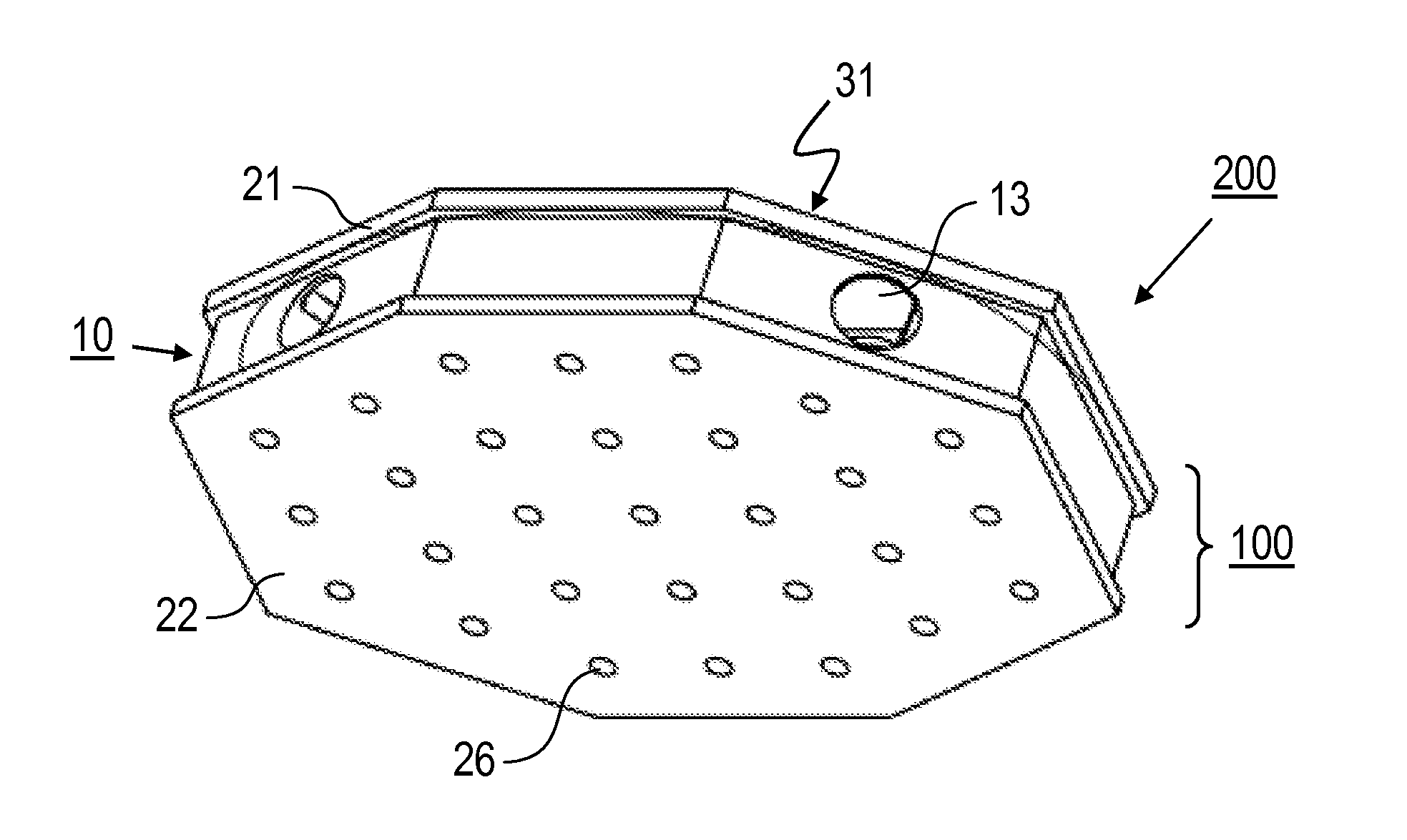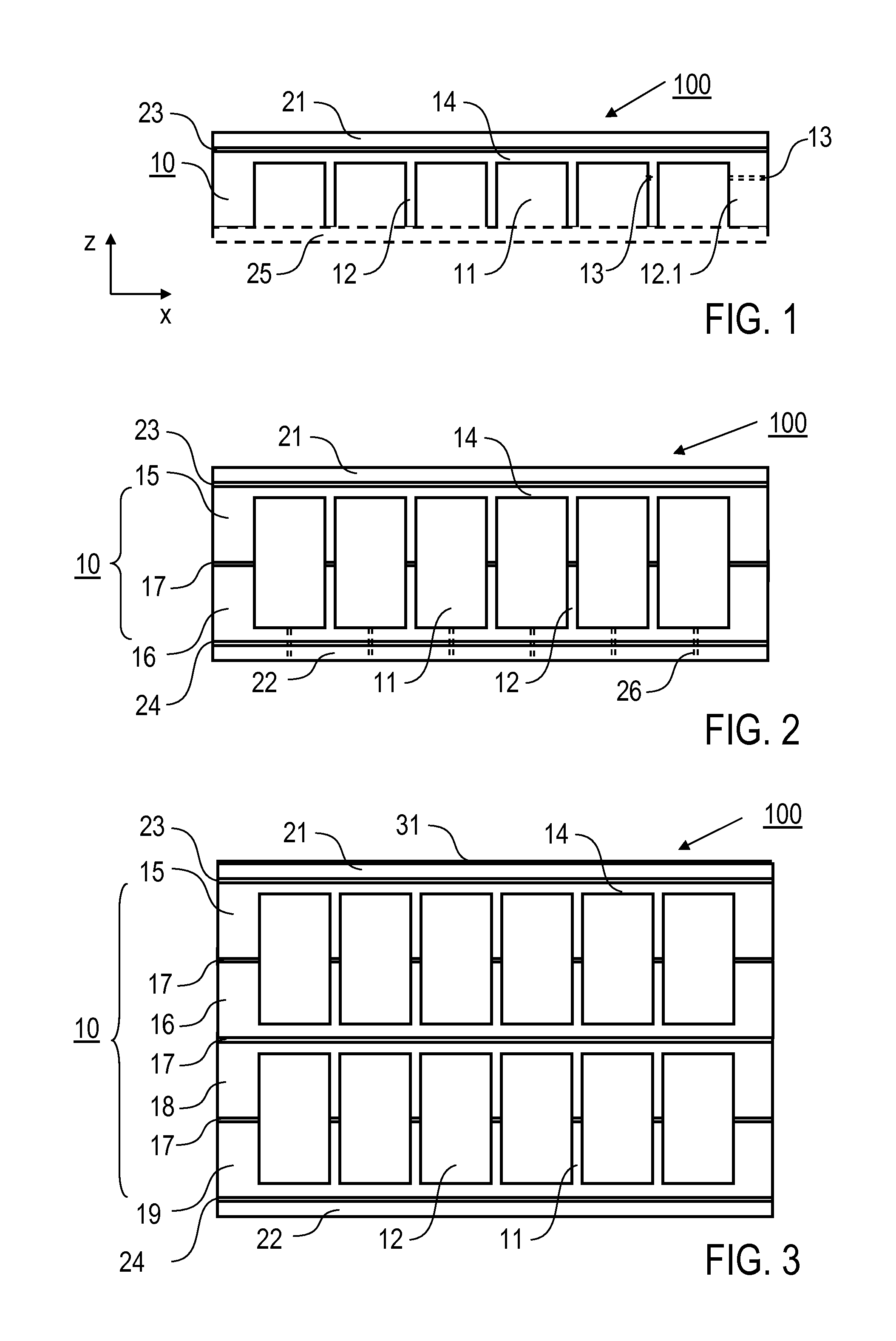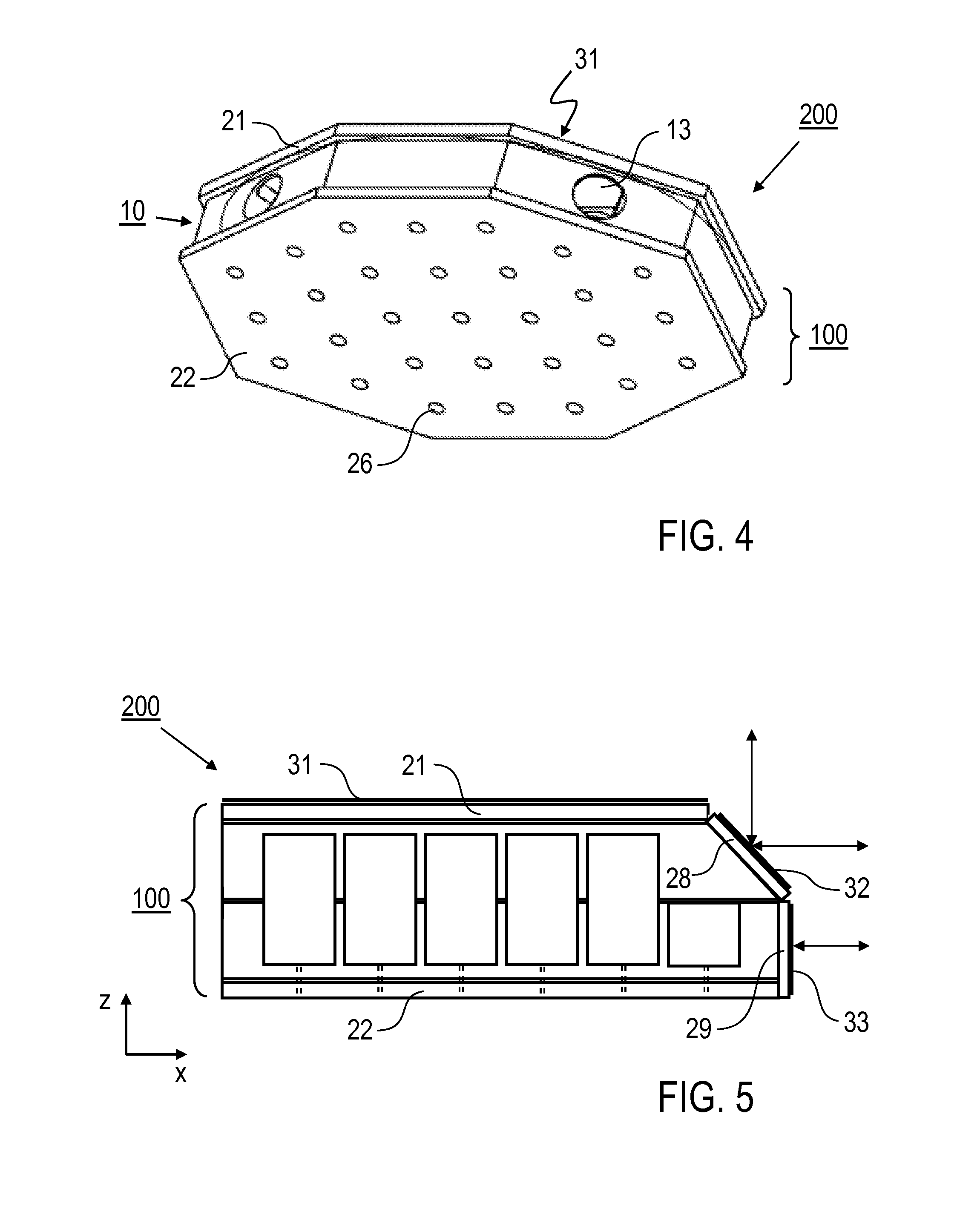Lightweight carrier structure, particularly for optical components, and method for its production
a carrier structure and optical component technology, applied in the direction of machine supports, domestic objects, lamination, etc., can solve problems such as processing difficulties, and achieve the effect of small surface roughness and minimal surface roughness
- Summary
- Abstract
- Description
- Claims
- Application Information
AI Technical Summary
Benefits of technology
Problems solved by technology
Method used
Image
Examples
Embodiment Construction
[0030]FIGS. 1 to 3 illustrate embodiments of the carrier structure 100 according to the invention in a schematic sectional view which is not to scale. The carrier structure 100 comprises a carrier body 10 and at least one cover layer 21, 22 which is connected to surfaces of the carrier body 10 on one or both sides by means of at least one bond connection 23, 24.
[0031]The carrier body 10 consists of an electrically conductive ceramic, e.g. SiSiC ceramic, in which hollows 11 are formed. For applications of the carrier structure as a mirror block, e.g. in a CPA system or a telescope, the thickness of the carrier body 10 is preferably selected in the range from 1 cm to 10 cm. The hollows 11 extend in the thickness direction (z direction) through the carrier body 10 in such a manner that a side wall 14 closed in the lateral direction (x direction) remains closed on one side of the carrier body 10. The side walls 14 form the main surfaces of the carrier body 10. All hollows 11 can have th...
PUM
| Property | Measurement | Unit |
|---|---|---|
| temperature | aaaaa | aaaaa |
| thickness | aaaaa | aaaaa |
| thickness | aaaaa | aaaaa |
Abstract
Description
Claims
Application Information
 Login to View More
Login to View More - R&D
- Intellectual Property
- Life Sciences
- Materials
- Tech Scout
- Unparalleled Data Quality
- Higher Quality Content
- 60% Fewer Hallucinations
Browse by: Latest US Patents, China's latest patents, Technical Efficacy Thesaurus, Application Domain, Technology Topic, Popular Technical Reports.
© 2025 PatSnap. All rights reserved.Legal|Privacy policy|Modern Slavery Act Transparency Statement|Sitemap|About US| Contact US: help@patsnap.com



